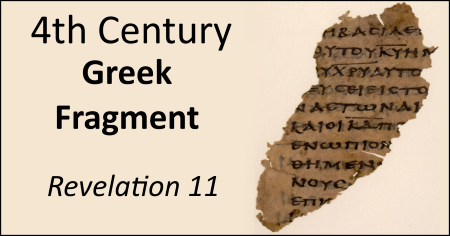
The Bible, from the Greek biblia (the books), is a library of 66 volumes of various lengths. The 39 Old Testament volumes were written over a period spanning 900-1,000 years, from about 1400 B.C. to 500 B.C. The New Testament consists of books and letters written in a 50 year period, from about 50 A.D. to 100 A.D.
Since these books were written by numerous authors over many centuries, they were not immediately gathered into the single volume we enjoy today. The compiling of the Bible took time. To understand how it came about, we need to discuss an important innovation of the first century called the codex. (Actually, we don’t know exactly when the codex came into use, though many scholars believe that it was around 90 A.D.).
For centuries, papyrus sheets were glued together to make scrolls. These scrolls were the “books” of the ancients. The longest of the scrolls were about 35 feet long, and were long enough to contain the entire manuscript of the gospels like Matthew and Luke. It has been suggested that perhaps Luke created his work in two volumes (Luke and Acts) simply because a scroll could not contain the entirety of his writing to Theophilus. Scrolls were bulky, and awkward to read.
At some point in time, someone began to stack the sheets of papyrus or parchment, fold them in the middle and stitch them together, forming what we know as a book. The Roman word is codex. It could be carried about, easily read, could be written upon on both sides of the parchment, and could even be bound to include more than a single volume.
Manuscript evidence shows how popular the codex was to early Christians. Imagine being able to bind together the four gospels. Or have an entire volume containing all of Paul’s letters. Today, with mechanical printing and fine paper, we have reached the point where we can have the entire text of the Bible in a single, slim volume.
Also today, with an app on our phone, we can access literally hundreds of translations from a multitude of languages, on a device we can put in our pocket. Imagine what Peter and Paul would have thought of that! And yet, sadly, many never take advantage of this blessing by studying God’s will for man.
The Bible consists of two divisions, referred to as the Old and New Testaments. This major division rests upon the fact that God has made two covenants with mankind. The first, or Old Testament contains God’s covenant with the nation of Israel. The second, or New Testament contains God’s final covenant with all mankind, centered on the life, death and resurrection of God’s Son.
The Old Testament, as it is compiled in our English translations, contains four major sections:
-
The five books of the law, or Pentateuch, which were written by Moses. (Genesis—Deuteronomy)
-
Twelve books of history (Joshua—Esther)
-
Five books of poetry (Job—Song of Solomon)
-
Seventeen books of prophecy (Isaiah—Malachi)
This arrangement follows the Latin Vulgate manuscript, which was itself derived from the Septuagint (an ancient Greek translation of the Old Testament, used by Jesus and the New Testament writers). Note: While the divisions and groupings are different in the Hebrew versions of the Old Testament, the actual books are identical.
The New Testament has been compiled into three different sections:
-
The five books of history, (Matthew—Acts)
-
Twenty-one books of doctrine (Romans—3 John)
-
One book of prophecy (Revelation).
Note: The book of Revelation contains apocalyptic, or symbolic language. It differs from the rest of the New Testament in this way.
The original autographs of the Bible were written in three different languages: 1) Hebrew; 2) Aramaic; 3) Greek. The Aramaic language is similar to Hebrew, and after the exile of Judah into captivity, became the common tongue of Palestine. Small portions of the Old Testament were written in Aramaic. The largest section is found in Daniel 2:4b—7:28. There are also several New Testament phrases which were written in Aramaic. Most of these were phrases said by Jesus, such as talitha cumi (Mark 5:41); ephphatha (Mark 7:34); Eloi, Eloi, lama sabachthani (March 15:34), and Jesus’ use of the Aramaic word for Father, Abba.
The primary language of the Old Testament was Hebrew. Hebrew seems strange to our eyes. The alphabet is different, the language is written from right to left, unlike other languages, and has no vowels. Interestingly, the pronunciation of God’s name in ancient times (the English equivalent of the Hebrew letters, YHWH) can’t be known today because no vowels or markings are available. The typical pronunciation, (Yah-Way), is only a guess.
The New Testament was primarily written in the common or “Koine” Greek, as contrasted with classical Greek. It was the universal language of commerce in the first century. The New Testament writers ensured a rapid dissemination of God’s word by writing in the language that was used throughout the word at that time. The books and letters were copied and compiled by different Christians into codexes, heeding Paul’s admonition that his letters be read and then be shared, (cf. Colossians 4:16). Our New Testaments today are a product of that copying and sharing by the early Christians.




